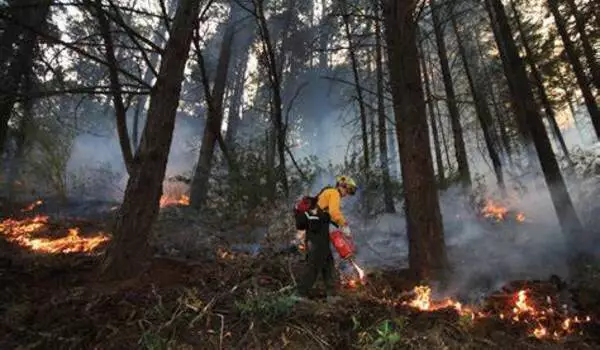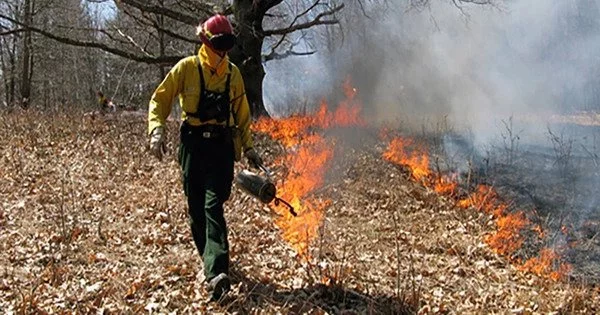According to research, managed and prescribed fires can be effective in reducing the severity and impact of wildfires. These controlled fires are intentionally set under specific conditions and managed by trained professionals in order to mimic natural fire regimes, promote ecosystem health, and reduce flammable vegetation buildup.
Fires in America’s dry conifer forests are burning hotter and killing more trees today than in previous centuries, according to scientists. Who is the main offender? A lack of fires, paradoxically. According to a study published recently in Forest Ecology and Management, fires in America’s dry conifer forests are burning hotter and killing more trees today than in previous centuries. Who is the main offender? A lack of fires, paradoxically.
Dr. Sean Parks works at the USDA Forest Service Rocky Mountain Research Station as a research ecologist. He and his colleagues used satellite data to characterize fire severity in dry conifer forests in the present (1985-2020) and then compared it to fire severity in the past (1600-1875). Their findings show that in the absence of frequent, low-severity fires like those seen in the past, fires today are more severe and more likely to kill trees. The long-term survival of dry conifer forests on the landscape is jeopardized by such extensive severe burning over time.
Our findings demonstrate that contemporary dry conifer forest fire regimes are highly departed from historical conditions, burning with higher severity over a greater proportion of area and threatening the long-term persistence of dry conifer forests on the landscape.
Dry conifer forests in North America are no strangers to fire; historically, these forests burned every 5-35 years. Because historical fires were generally of low to moderate severity, many trees survived. However, beginning in the late 1800s, fire was effectively prohibited in dry conifer forests. This was primarily due to a combination of factors, including direct fire suppression, intensive livestock grazing, and the forced interruption of cultural burning, which was a well-documented practice for many Indigenous communities prior to colonization. In the absence of fire, these forests became denser as flammable materials such as leaf litter and dead trees accumulated. This has raised fears that today’s fires will be hotter and more severe than those that occurred prior to 1875.
“Our findings demonstrate that contemporary dry conifer forest fire regimes are highly departed from historical conditions, burning with higher severity over a greater proportion of area and threatening the long-term persistence of dry conifer forests on the landscape,” said Parks.

Scientists were also able to compare federal wilderness areas to those that are not. They discovered that non-wilderness areas were subjected to slightly more severe fires than wilderness areas. Because commercial activities such as logging are prohibited in most wilderness areas, the absence of historical fires and the resulting buildup of flammable materials appears to play a larger role in today’s increasingly severe fires than historical logging activities.
The Gila Wilderness was used as a case study by scientists. They discovered in the Gila that a decades-long policy of managing fire, including allowing it to burn in certain scenarios, reduced the severity of fires in dry conifer forests from 1985 to 2020 when compared to other areas in the Southwestern region studied.
This case study reinforces the idea that low-severity fire breeds low-severity fire and demonstrates that low-severity fire can occur on a regular basis even as our climate has become warmer and drier. Scientists believe that this approach, along with prescribed fire and other fuel-reduction management actions, could serve as a road map for restoring resilience to dry conifer forests across the western United States.
“Our findings highlight the critical importance of restoration and proactive measures in protecting our forests,” Parks said.





